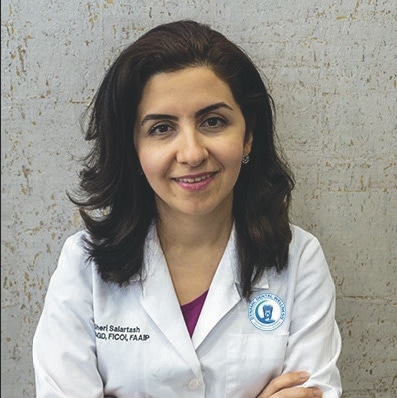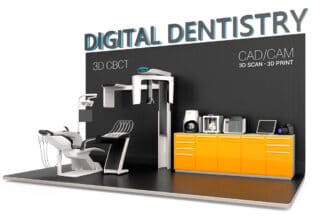
Dynamic Dental Wellness
20755 Williamsport Place
Suite #300
Ashburn, VA 20147

More Dental Health Articles
CBCT Scans Can Impact Your Dental Treatment

Dental imaging is a routine part of a comprehensive exam. But the type of imaging can impact what the dentist sees and diagnoses. A cone beam CT (or CBCT) scan allows dentists to provide an accurate diagnosis and recommend the best treatment for the patient – because every patient deserves the highest quality of dental care.
What Is CBCT?
At the dawn of the 21st century, a new revolutionary technology entered the diagnostic world. The cone beam computed tomography, or CBCT scan. The scan forms a three-dimensional image of the object. The CBCT scan was groundbreaking for dentists, because it offered the ability to visualize intricate structures within the mouth, such as root canals, nerve path, bones density, and even sinuses within the jaw.
How CBCT works
The CBCT scan works by using a rotating imaging device that moves around the object. It will record between 150-600 images, all from different angles. Just like if you were to create a flipbook with many pictures, when you rapidly flip the pages, it will form an animated cartoon that looks like the object is moving.
A powerful computer collects and processes the images, forming a three-dimensional virtual model of the area. The mode can then be rotated from side to side, up and down, and even examined in greater or less detail. But most importantly, the CBCT image is something that is quick, easy, and does not require the patient to be in discomfort.
What Can CBCT Be Used For?
The CT image can be used to identify a broad range of malformation, especially around the mouth, jaw, and neck. It’s ability to see fine anatomical structures (in 3D), has become valuable in treating conditions in many areas of dentistry.
- Endodontics: The 3D image can reveal the exact shape and branches of the root canals, as well as the location of the infection. This then allows the dentist to remove the inner infected pulp tissues and replace it with a sterile material.
- Oral Surgery: The 3D image can provide critical information when it comes to impacted tooth and its relationship to adjacent teeth and nerve canals. With this information, proper treatment can then be recommended.
- Dental Implants: For a dental implant to be placed, the tissues of the target area cannot be infected and there needs to be enough bone. The 3D image reveals those factors as well as identifies proper location for implant placement. This increases the success rate of implants.
- Orthodontics: The 3D image can provide information as to where and how the teeth can be moved, especially during growth and development.
- Orthognathic Jaw Surgery: Complex cases that involve both orthodontic tooth movements and orthognathic jaw surgery can be evaluated by using the CT image.
- Temporo-Mandibular Joint (TMJ) Disease: The 3D image can reveal facial pain by viewing the TMJ, teeth, sinuses, and airway.
- Sleep Apnea: The 3D image can reveal the width of the airway, nose, mouth, and windpipe, thus allowing for proper treatment for the patient.
Could the CBCT Benefit You?
There is not a general rule saying that a CBCT image is needed for every patient. That is why your dentist should evaluate your unique situation and health history to determine what is best. With today’s technology, there is no need to worry since the amount of radiation from a CT scan is so small compared to many other diagnostic tools. In fact, some CBCT scans are FDA-approved for pediatric use. Therefore, if you or a family member are interested in a CBCT scan, do not hesitate to reach out to your dentist.
Other Articles You May Find of Interest...
- The Importance of Phase I Orthodontic Treatment for Children Aged 8-10
- Retainers in Riverdale, NY: Choosing the Best Option for Your Smile
- Discover Top-Quality Dental Care in Rockford IL
- Pregnancy & Hormonal Gingivitis: An Essential Guide
- Straighten Your Teeth, Improve Your Health
- Dental Implants For Edentulous Patients
- Dental X-Rays Explained: Procedures, Uses, And Frequency

















